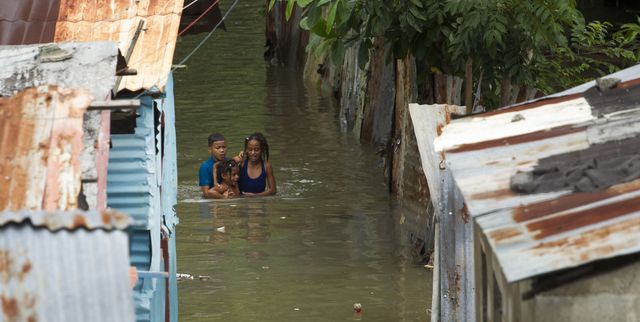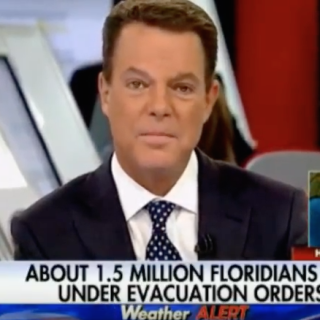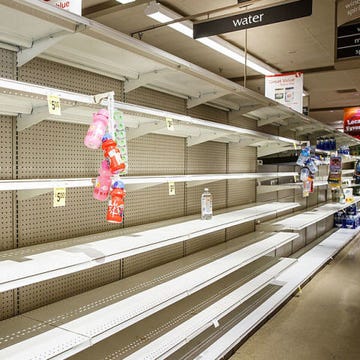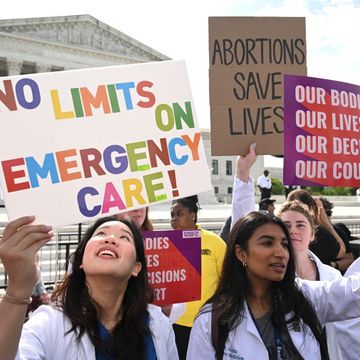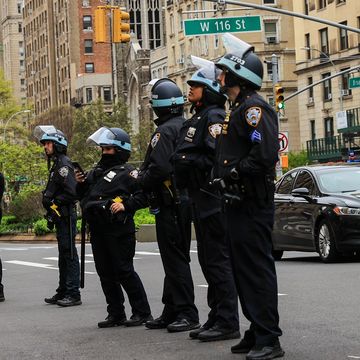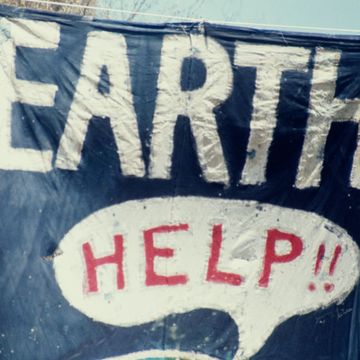There is going to be no news at all for the next couple days except for whatever Hurricane Matthew does to Florida and the southeastern coast of the United States. The presidential campaign is going to go under in the media storm surge, as very likely will the second presidential debate Sunday night in St. Louis. It's been almost 4000 days since a major hurricane made landfall in the United States and so the cable news people have had that much time to devise new logos and scary theme music.
The storm already is freakish in its ability to re-energize itself. It is a very lucky storm, as this report from Decodedscience.org makes clear.
As the steering currents weakened, Matthew eyed his chance to slam the United States. The mountains of Haiti and Cuba, often lethal to a hurricane, stood in the way, but Matthew spotted an opening, the Windward Passage. And his luck held out as he threaded the needle between Haiti and Cuba and emerged only minimally disrupted into the warm waters of the Bahamas. Yes, the Bahamas are land, but so low that these islands don't disrupt the circulation of a mature hurricane. There's enough warm water around the islands to feed the hungry beast, which lives off latent heat of evaporation. So that's where we are now. Matthew is a mature storm, diminished to category three by its interaction with Cuba and Haiti but still very dangerous, spinning across the Bahamas, heading for the U.S. – Florida, Georgia, South Carolina, and North Carolina.
One of the more ominous reports out of Florida is that NASA has shut down the Kennedy Space Center at Cape Canaveral pending the arrival of the storm. If the prediction models hold, Matthew will be the worst storm to hit the facility since it opened in 1962. (Talk about pushing your luck.) It's been brushed by smaller storms in the past; Hurricane Frances, a category-2 event, caused about $100 million in damage back in 2004. But it never has experienced a direct hit from a Category 4 hurricane. Most of its more iconic buildings are tall and completely exposed to the weather; the massive Vehicle Assembly Building is built to tolerate only a category-3 storm.
And, as anybody who's been there will testify, the facility is built on a marshy sea-island that's already taking a regular beating from climate change-related ocean activity. As this Gizmodo summary points out, the whole event could be dangerously unprecedented.
Here's the thing about Matthew: Space Coast has never dealt with anything like it. Not in launch history; not in meteorological records dating back to 1851. The storm is projected to pass perilously close to Florida's entire eastern seaboard beginning later today, with a Category 3 or 4 eye passing directly over Kennedy Space Center on Friday, according to Weather Underground meteorologist Jeff Masters. "We're talking about a storm that's basically hitting dead-on," Masters told Gizmodo. "I'd expect at least 90 mile per hour winds."
The technology of the place is as open to the weather as the gantry cranes are and, not to be entirely an alarmist, but if the KSC were to be destroyed by this storm, that would leave Russia essentially with the keys to space travel for quite some time. This does not fill me with confidence.
And then there's the Zika virus. The largest concentration of Zika cases in the United States is in and around Dade County, which may be spared the direct impact of the storm, but a huge rain event like Matthew quite obviously would leave massive amounts of standing water within which Aedes aegypti, the mosquito that carried the virus, could breed and thrive.
(A large part of the hot zone is at an elevation of nine feet above sea level. Some predictions have the area being inundated by a 12-foot storm surge.)
And it is not just puddles, either. Think about how water can pool in piles of debris, and in scattered wreckage. Think about endless heaps of worthless household junk. Think about thousands of evacuees leaving the current hot zones in and around Miami. Now think about all the crews coming from all over the country to help with the recovery effort over the next several months, walking amid the debris, turning it over in the heat that always follows a hurricane. Now think about all those crews going back to Iowa or Maine.
The most direct precedent probably is the experience of Hurricane Katrina in 2005. A 2008 report from the Centers for Disease Control demonstrated how the mosquito-borne West Nile virus spiked in the immediate aftermath of the storm.
The immediate increase in cases may be attributed to increased human exposure to mosquitoes. Tens of thousands of persons in the hurricane-affected region were living in damaged housing or were waiting outside for days to be evacuated. The sudden decrease in WNND cases in the hurricane-affected areas 3 weeks after landfall could be attributed to reduced human exposure caused by eventual evacuation and aerial application of insecticides. The increase in WNND incidence in 2006 might also be due to increased human-mosquito exposure as a result of mosquito larval habitat creation (root ball voids from fallen trees, and flooded abandoned swimming pools), continued substandard living conditions, and increased outdoor reconstruction activities.
One of the abiding principles of the environmental movement always has been that the natural world—which includes human beings—is an interlocking series of systems, each dependent on the other. In the ludicrous pushback against the reality of the climate crisis, this regularly gets mocked by people who are well paid to be stupid. But the fact is that climate scientists have been warning us about the dangers of warmer oceans, which cause more intense and long-lasting storms, which can break down the space program and unleash a tropical disease.
None of these things can happen without the other things happening. That's the way this thing works, for good or ill.
Click here to respond to this post on the official Esquire Politics Facebook page.

Charles P Pierce is the author of four books, most recently Idiot America, and has been a working journalist since 1976. He lives near Boston and has three children.
